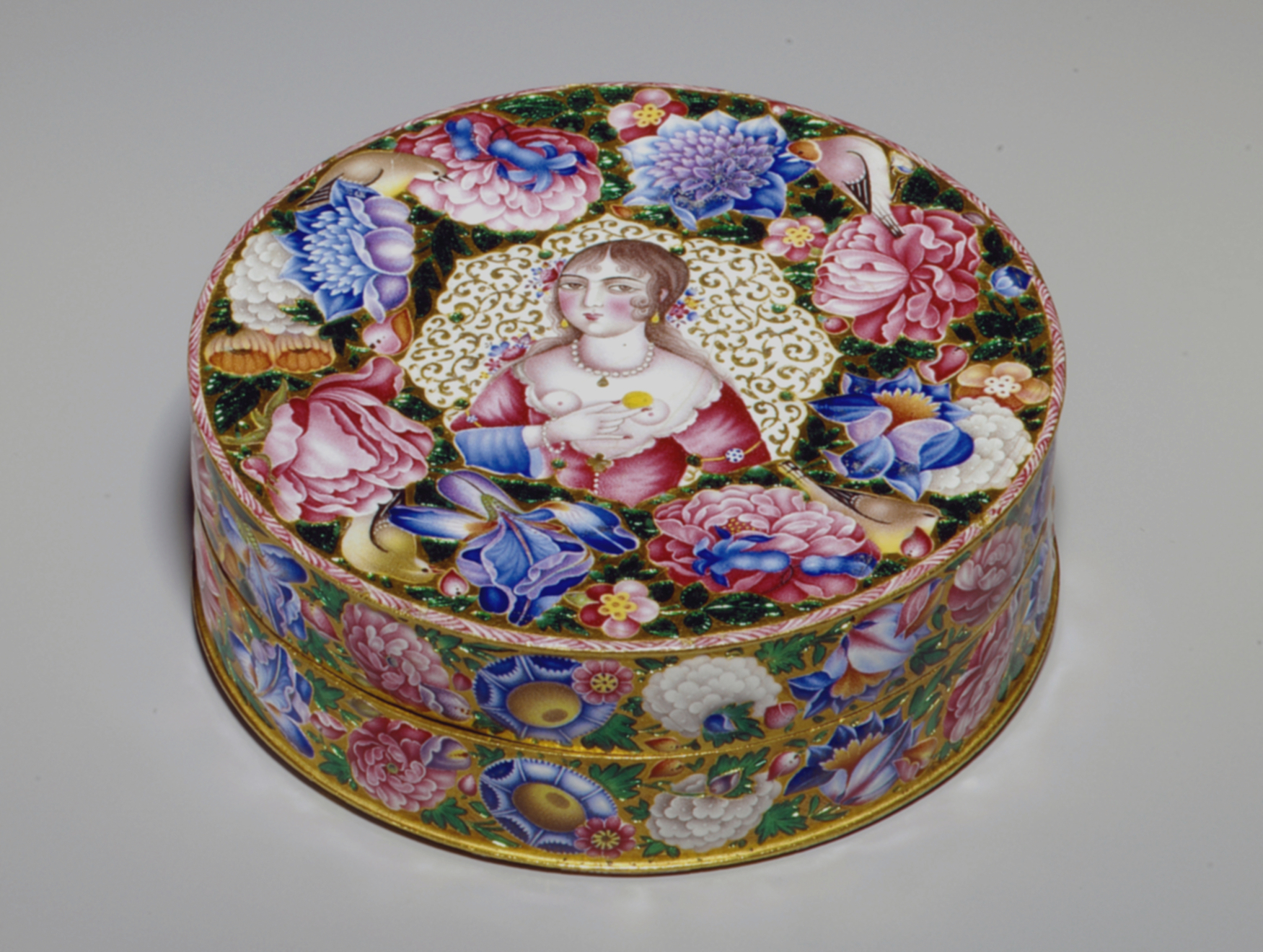 Print Page
Print Page
 Print Page
Print Page
Location: Iran
Materials: gold, translucent and painted enamel
Dimensions: 3.4 x 8.9 cm
Accession Number: ISL 425
Other Notes:
Signed examples of Qajar enamelwork are relatively rare. Although the inscription on the box suggests that the artist was from Aleppo – a city not renowned for enamelwork – it is evident both from the technical refinement of his work and his mastery of the court style of enamelling that Muhsin trained in Tehran. It is conceivable that he was the same artist who decorated a travelling mirror case in the collection of the Crown jewels of Iran, signed ‘Muhsin’ and dated AH 1212 (AD 1797-98); however, variant readings of the inscription preclude a definitive attribution. Certainly there are similarities in the quality of execution, and parallels between these two pieces may also be noted in the treatment of the floral motifs and in the choice of iconography – which includes, apart from a portrait of Fath’ali Shah, a scantily draped female akin to the figure depicted on the base of this box.
The box is part of a rather extended group of enamels, the decoration of which is based on European prints or paintings. The four ladies depicted on the lid are not only dressed in European fashion but also have western facial features; furthermore, the buildings in the landscape have the same origin. Contrasting with this innocent Arcadian idyll, the decoration on the base is a more erotically charged study of a bare-breasted female, revealing the Qajar court’s keen interest in such subjects.
Bibliography:
Haydn Williams, Enamels of the World: 1700-2000 The Khalili Collections, London 2009, cat. 136, pp. 208–9.

